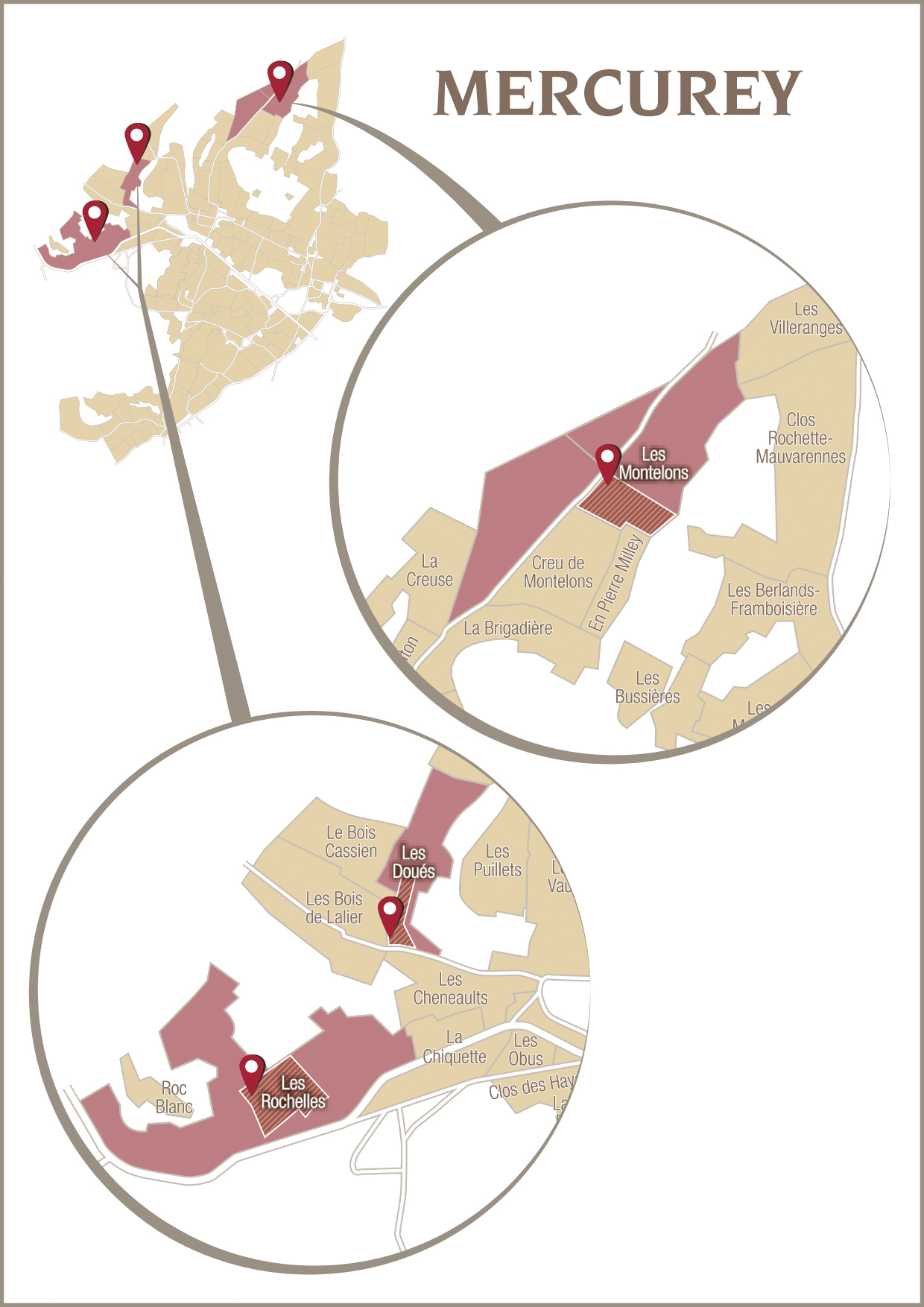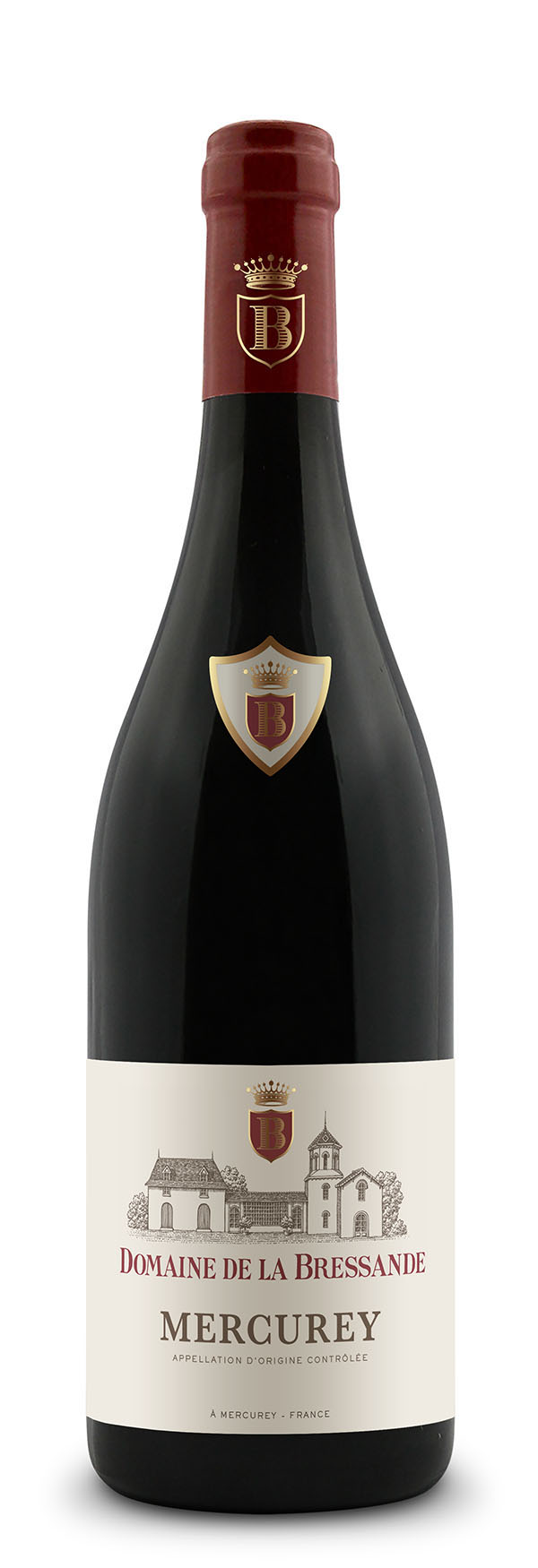MERCUREY 2021
Discover the various vintages
2023Grape Variety
100% Pinot Noir.
Tasting notes
Colour: Ruby red.
Nose: Aromas of red fruits with delicate toasted notes.
Palate: The mouth is greedy, full of fruit, carried by supple and soft tannins.
Food and wine pairing
Will be the perfect companion to roasted or grilled meats, light game in sauce and most cheeses.
Serving suggestions
Serve at around 16°C (61°F).
Ageing potential
4 to 5 years.
Origin
In 1923, the civil court of Chalon-sur-Saône instituted, by judgment, the appellation d’origine mercurey, allowing it to become one of the three oldest appellations of Burgundy.
In the Côte Chalonnaise, Mercurey has always enjoyed an excellent reputation.
This communal appellation includes 32 Climats classified as Premiers Crus. Located to the north of the Côte Chalonnaise, more than 90% of the wine produced under the Mercurey name is red. A total of 543 hectares, of which 148 are Premiers Crus. As for the white wines, they represent 106 hectares, including 18 classified as Premiers Crus.
The village of Mercurey owes its name to the Romans who, during the occupation of the region, built a temple in homage to Mercury, God of commerce and finance.
The vineyard estate extends now over 21 hectares and offers 3 upper quality wines from the appellation of Mercurey. White wines: Mercurey (3 ha), red wines: Mercurey (7.50 ha) and Mercurey 1er Cru En Sazenay (1.75 ha).
Terroir
- Vineyard area : 7,50 ha
- Vines age : 30 ans
- Soil : sol argilo-calcaire
Vinification and maturing
Harvest took place on our Mercurey vineyards from 25. to 27 September. Grapes were handpicked and carefully sorted, then carried in 16kg boxes to protect them from crush and compaction. Maceration lasted about 14 to 18 days in order to get wines with a deep color, complex aromas and as a consequence a good ageing potential.
Traditional vinification was then carried out in temperature-controlled concrete vats - to master the fermentation temperatures thanks to the great inertia of concrete - with regular stirring and pumpings-over. Alternating those two methods is a good way to obtain balanced wines because the tannins are not too much extracted.
Then, the wine was aged for 8 months in oak barrels with 20% new oak. Light filtration before bottling.
Vintage : 2021
Nature certainly set a challenge for the winegrower and the winemaker with this vintage.
It began with very warm temperatures at the end of February which led to an early bud break.
The historic frost in April then destroyed young shoots that had emerged too early, significantly affecting the future harvest. Changing weather continued to characterize the vintage through to the harvests.
There were spells of rain from May to mid-August, obliging winegrowers to be constantly on the alert. The only periods of relative calm were during flowering, which took place in good conditions for the formation of the future fruit, and the véraison (colour change), which benefited from the return of the sun from mid-August.
The vagaries of the weather contributed to the development of outbreaks of disease, which were contained thanks to the tireless efforts of our winegrowers. In spite of this, considerable sacrifices had to be made to ensure a high level of quality, and rigorous sorting of the fruit in the vineyard and on arrival at the winery was necessary.
This vintage also required a major technical effort. The vinifications had to be carried out with meticulous attention and precision with a particular care over the extraction of colouring matter, the balance of the structure and the aromatic expression of the red wines, and of the freshness, balance of acidity and aromatic potential of the white wines.


